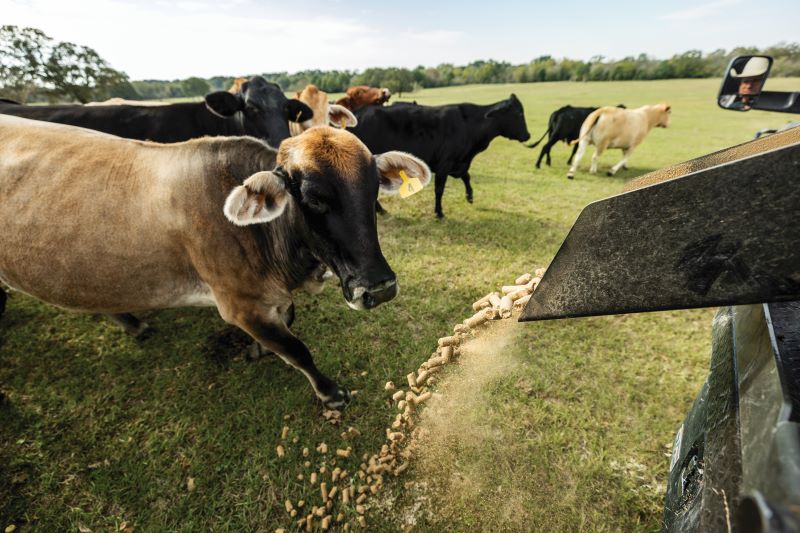Comprehending Animals Risk Defense (LRP) Insurance Coverage: A Comprehensive Overview
Browsing the realm of livestock threat security (LRP) insurance can be an intricate undertaking for lots of in the agricultural sector. This type of insurance policy provides a security web against market variations and unpredicted conditions that might impact animals producers. By understanding the details of LRP insurance, manufacturers can make enlightened decisions that might secure their operations from economic dangers. From just how LRP insurance coverage operates to the various protection alternatives available, there is much to discover in this detailed overview that could potentially form the means livestock producers approach danger monitoring in their companies.

How LRP Insurance Coverage Functions
Periodically, comprehending the auto mechanics of Animals Risk Protection (LRP) insurance can be complex, but damaging down exactly how it functions can supply clarity for farmers and ranchers. LRP insurance policy is a danger management tool designed to shield animals manufacturers against unanticipated cost declines. The plan enables manufacturers to set a coverage level based on their details needs, choosing the variety of head, weight range, and coverage cost. Once the policy remains in place, if market rates fall below the insurance coverage price, manufacturers can sue for the difference. It is very important to note that LRP insurance policy is not a profits guarantee; instead, it concentrates solely on cost risk defense. The coverage period usually varies from 13 to 52 weeks, offering adaptability for producers to select a period that aligns with their manufacturing cycle. By utilizing LRP insurance coverage, farmers and ranchers can minimize the financial dangers connected with changing market value, making sure greater stability in their procedures.
Qualification and Insurance Coverage Options

When it comes to protection choices, LRP insurance provides producers the flexibility to choose the coverage degree, insurance coverage duration, and recommendations that ideal fit their threat administration requirements. By understanding the eligibility criteria and coverage options available, livestock manufacturers can make educated decisions to manage risk properly.
Advantages And Disadvantages of LRP Insurance Policy
When reviewing Animals Danger Protection (LRP) insurance policy, it is crucial for animals manufacturers to consider the advantages and downsides integral in this threat monitoring tool.

One of the primary advantages of LRP insurance policy is its capacity to provide security against a decline in animals rates. In addition, LRP insurance supplies a degree of flexibility, allowing producers to customize protection degrees and policy periods to suit their specific needs.
One constraint of LRP insurance policy is that it does not shield against all types of risks, such as disease episodes or natural calamities. It is critical for manufacturers to thoroughly assess their specific danger exposure and monetary situation to establish if LRP insurance coverage is the ideal risk administration device for their procedure.
Recognizing LRP Insurance Policy Premiums

Tips for Making The Most Of LRP Advantages
Making best use of the benefits of Animals Threat Security (LRP) insurance policy requires critical planning and positive threat monitoring - Bagley Risk Management. To maximize your LRP insurance coverage, take into consideration the following ideas:
On A Regular Basis Analyze Market Problems: Stay informed concerning market patterns and price variations in the livestock industry. By keeping an eye on these elements, you can make enlightened decisions about when to purchase LRP protection to secure versus possible losses.
Set Realistic Insurance Coverage Degrees: When picking insurance coverage levels, consider your production costs, market price of livestock, and prospective dangers - Bagley Risk Management. Setting realistic protection levels makes certain that you are properly safeguarded without overpaying for unnecessary insurance coverage
Diversify Your Protection: Rather of depending only on LRP insurance, take into consideration diversifying your danger administration approaches. Incorporating LRP with various other threat administration devices such basics as futures agreements or alternatives can give thorough coverage versus market uncertainties.
Review and Readjust Coverage On a regular basis: As market conditions alter, periodically review your LRP protection to ensure it straightens with your present danger direct exposure. Readjusting insurance coverage degrees and timing of purchases can aid optimize your danger defense method. By following these suggestions, you can optimize the benefits of LRP insurance policy and secure your livestock procedure against unpredicted risks.
Verdict
In final thought, livestock risk defense (LRP) insurance coverage is a valuable tool for farmers to handle the financial threats connected with their livestock operations. By comprehending how LRP functions, eligibility and coverage choices, along with the benefits and drawbacks of this insurance policy, farmers can make informed decisions to shield their source of incomes. By thoroughly taking into consideration LRP premiums and implementing approaches to make best use of benefits, farmers can reduce prospective losses and ensure the sustainability of their operations.
Animals manufacturers interested in acquiring Livestock Risk Security (LRP) insurance policy can explore a range of eligibility standards and coverage options tailored to their details livestock operations.When it comes to protection choices, LRP insurance policy offers producers the versatility to select the coverage level, coverage period, and recommendations that ideal match their threat management needs.To understand the ins and outs of Livestock Danger Security (LRP) insurance policy totally, comprehending the variables affecting LRP insurance policy premiums is crucial. LRP insurance costs are determined by various elements, including the insurance coverage degree chosen, the expected rate of animals at the end of the protection period, the kind of animals being guaranteed, and the size of the coverage period.Evaluation and Change Coverage On a regular basis: As market problems alter, regularly assess your LRP insurance look at this web-site coverage to guarantee it lines up with your current risk direct exposure.